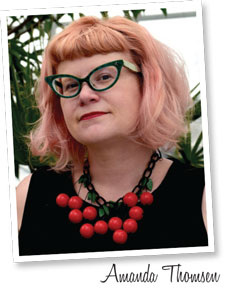8/1/2018
Supercharged Bat-tery
Amanda Thomsen

To us gardening insiders, bat houses and wanting to get bats in our yards is nothing new. However, to many young homeowners, newly awakened to the idea that pesticides are something to be avoided, perhaps a bat-friendly endcap or display in your garden center would be a welcome addition.
We all know people who don’t use their outdoor spaces at night because the mosquitoes are unbearable. Well, a single bat can eat up to 600 mosquitoes in one night; they also eat June bugs, stink bugs, grasshoppers, moths, crickets, spicy buffalo wings and … scorpions, eliminating or reducing the need for commercial insecticides. So what can go on this bat-friendly display in your store?
• Bat houses—There are a ton of styles available and they’re quite large. You’ll want to educate your customers on correct placement (nothing is sadder than an empty bat house). Bats like houses that are mounted on walls more than on poles or trees and they like a full-sun situation. Mount the bat houses as high up as possible.
• Bat-attractant spray—You also can merchandise a spray for those wooden bat boxes to encourage new tenants. I don’t want to know what goes into bat-attracting spray ...
• Books for adults that will change the current perceptions about bats, like “Bat Ecology” by Thomas H. Kuna & M. Brock Fenton (you know those guys are experts because they use initials in their names). Or books for kids like “Stellaluna” by Janell Cannon.
• Plants bats like—Although most bats eat insects, some dine on nectar and fruit. Over 500 plant species depend on bats as pollinators—one of them is chocolate. I’m letting Datura meteloides take over my yard so that those night-blooming trumpets are open all night like a Denny’s for any willing bats in my neighborhood (also, it’s just easier to let the datura take over). Bats also like: fleabane, goldenrod, moonflower vine, nicotiana, honeysuckle, yucca, agave (thank bats for tequila, too), French marigolds, bananas, figs and peaches.
• Bats love waterfront property (probably because they can’t drive through the local Starbucks and pick up a cold brew). The bat boxes should be as near to water as possible—that can be a pond, water feature or even bird bath.
• Guano—Even though guano is the END product of bat life and not anything used to coax bats to live in someone’s backyard, it should still be touted as another positive benefit from our little, much-maligned friends. Bat guano is a remarkable fertilizer, or ingredient in some of the best fertilizers, and the smell will haunt me to my grave.
Can you find a local bat or more general wildlife rescue to come into your store and give a workshop or class? Can you have a meet-a-bat Saturday? (In October? It’s just good marketing.) What can you do to educate and create a buzz? Even if you creep out a few people, at least they’ll be talking!
As we know, education is what turns a casual customer into a lifelong addict. I think it’s worth coming up with a printed bat infographic that’s unique to your store. Mention that bats weigh only 8 ounces (on their best days) and can live up to 30 years; over the years they absorb many pesticides (by ingestion or inhalation, even during hibernation) over that time. It’s also worth laying out what to do if someone were to find a bat someplace it didn’t belong, how to tell if a bat has rabies (extremely rare), a hotline perhaps and some really general bat safety.
And there you go: a complete column about bats without mentioning Batman or the word “belfry” once. GP
Amanda Thomsen is a regular columnist in Green Profit magazine. You can find her funky, punky blog planted at KissMyAster.com and you can follow her on Facebook, Twitter AND Instagram @KissMyAster.